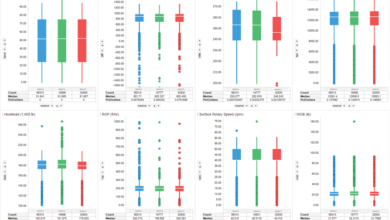Drilling & Completion Tech Digest
New system automates pipe makeup, evaluation of connection quality

Weatherford has launched the AutoTong system for automatic pipe makeup and autonomous evaluation of connection quality using high-resolution data. The system eliminates or reduces many of the inefficiencies associated with manual makeup of casing and completion strings. By automating the final makeup sequence with a proprietary speed-control algorithm, speed is automatically adjusted when approaching the optimum torque, eliminating the sudden stops caused by traditional valves.
“It slows down gradually and stops at the optimum torque,” Scott McIntire, Weatherford Technical Sales Specialist, Well Integrity, said. “There’s no more dump valve or sudden stop at the maximum. It’s a nice, smooth makeup.” Further, a tong-mounted controller maintains consistent makeup to OEM connection parameters.
The system also minimizes manual data entry for thread-specific details by standardizing inputs using prepopulated parameters.
After the connection makeup process, the system uses the integrated AutoEvaluate software to evaluate the connections by automatically comparing the makeup graphs to the expected specifications and profiles. “Based on the OEM criteria, we’ve developed algorithms that will check this graph for us, eliminating the human error of reading the graph,” Mr McIntire said. The software also eliminates the need for a joint-analyzed makeup (JAM) unit and specialist to interpret the data, thus reducing personnel on the rig.
The software analyzes multiple data points – 20,000 data points per revolution – which results in a resolution 10 times greater than what the human eye can see on a JAM screen. “The old system would detect about 12 different anomalies,” Mr McIntire said. “That’s up to about 32 different anomalies that will be easily identified by the system.”
Along with detecting connection integrity issues, the AutoEvaluate software will display the problem, explain the issue and recommend the proper course of action through its Joint Issue Advisor feature. “It actually tells you what’s wrong with that makeup and provides you with the root cause and the corrective actions,” he said.
Next year, Weatherford plans to launch another version of this system, with additional sensors and remote-control capabilities. “This is where it’s complete remote control, nobody’s on the tong itself,” Mr McIntire said.
Weatherford is also looking to leverage its JAMCloud data storage, which houses data from pipe mills, well sites and offline makeup facilities, and combine it with the data from the rigs to ensure even greater well integrity.
Click here to watch DC’s video interview on the AutoTong system.
Vallourec launches innovation challenge on intelligent tubes
Vallourec is launching its first “Open Innovation Challenge” on the theme of intelligent tubes. “The group is consciously embracing Open Innovation to exploit the opportunities allowed by new technologies and, thus, develop its offer,” Director of Innovation Sylvie Dubois-Decool said.
“Intelligent” tubes could be designed to record and transmit information during their lifecycle: either information about the fluids in contact with the tubes (flow rate, pressure or temperature) or related to changes in the tubes themselves (changes in thickness or crack detection).
Developments such as high-performance sensors, low data transmission networks, big data and energy harvesting are innovative technologies that open up new opportunities for intelligent tubes.
This Open Innovation challenge will enable Vallourec to identify start-ups, laboratories and companies with expertise in these different technologies and to work with selected companies to develop solutions adapted to Vallourec’s markets.
Wood Group launches Sureflex JIP report following industrywide project on flexible pipe integrity management

Wood Group has published findings from a global joint industry project (JIP) in a report, “Flexible Pipe Integrity Management Guidance & Good Practice.”
The findings result from the Sureflex JIP, which aimed to improve industry knowledge and understanding of flexible pipe integrity management. The report shares experiences, lessons learned, failure statistics and inspection and monitoring insight from the use of unbonded flexible pipes in offshore applications.
Established in 2015, the JIP built on a series of initiatives led by Wood Group dating back to the late 1990s and previously run under the auspices of Oil & Gas UK, which led to the development of integrity management guidelines for flexible pipes in 2010.
Supported by a group of 13 participants, the project comprised major operators, including BP, Shell and Repsol Sinopec, flexible pipe manufacturers and certification and regulatory bodies, including the UK’s Health & Safety Executive.
The JIP gathered and analyzed data relating to flexible pipe operations, inspection, monitoring, degradation and integrity management practices. It provides an update to global damage and failure statistics and developed industry guidelines on flexible pipe integrity management good practice.
The initiative also assessed the tools and technologies used for the inspection and monitoring of these critical components.




